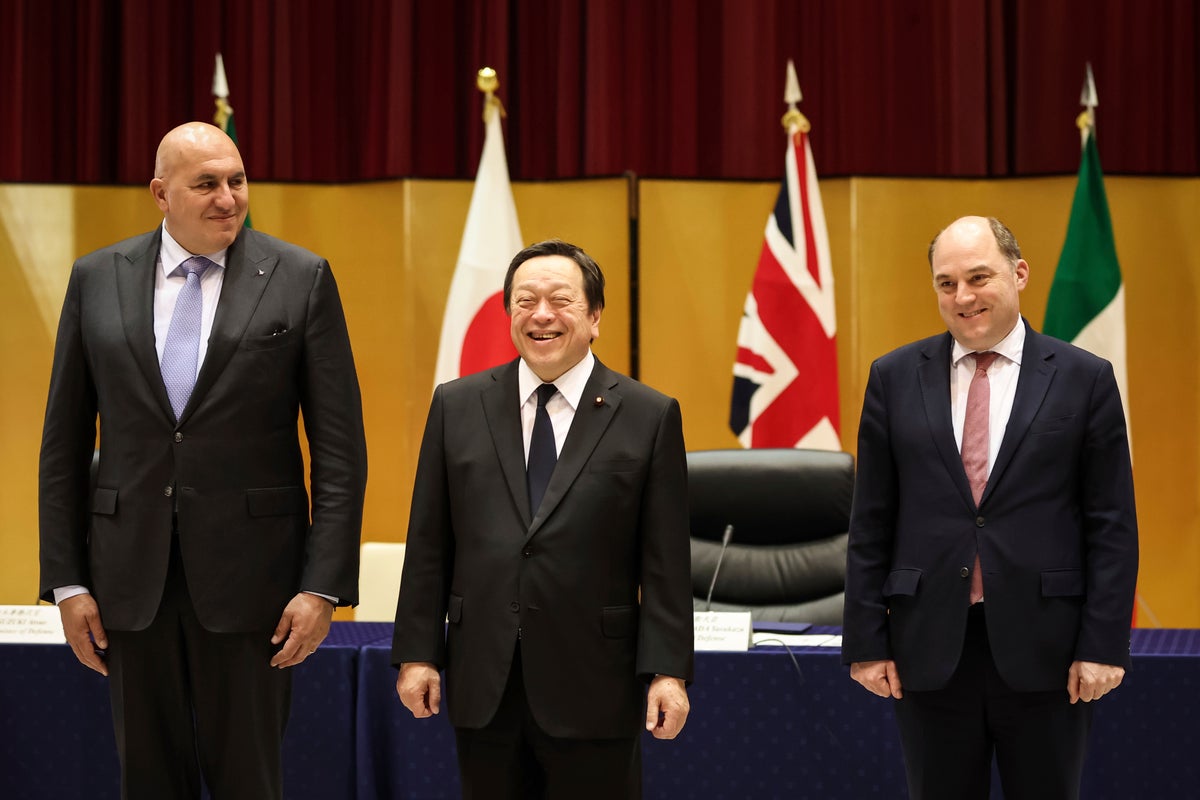
Japan, Britain and Italy reaffirmed their commitment Thursday to push joint development of a next-generation fighter jet as a centerpiece of their increasingly close defense ties in the face of growing threat from China, Russia and North Korea.
In December, Japan announced a joint next-generation fighter jet development with the U.K. and Italy as it looks to expand defense cooperation beyond its traditional ally, the United States.
The nations agreed to merge their earlier individual plans for development of next-generation planes — Japan's Mitsubishi F-X to succeed the retiring F-2s developed with the United States, and Britain’s Tempest, a successor to the Eurofighter Typhoon — to produce the new combat aircraft.
On Thursday, Japanese Defense Minister Yasukazu Hamada and his British and Italian counterparts, Ben Wallace and Guido Crosetto, confirmed their commitment to achieve the fighter jet deployment in 2035.
The deal will give Japan greater support in countering China’s growing assertiveness and allow Britain a bigger presence in the Indo-Pacific region.
Hamada said the joint fighter jet development is significant because it brings together technological advantages of the three countries to develop the advanced next-generation fighter and its necessary cutting-edge technology.
Wallace and Crosetto said the security in Europe and Asia is inseparable. The environment in the Indo-Pacific is critical for Britain and Italy as well, according to the Japanese Defense Ministry. The two ministers stressed the importance of cooperation between them and with Japan, which is increasingly considered an important defense partner.
The ministers also sat with industry representatives of Mitsubishi Heavy Industries, BAE Systems and Leonardo, to exchange views while confirming a united effort between the governments and industries to meet the deployment goal, the Japanese defense ministry said.
The new aircraft will be a multi-role stealth fighter superior to the F-35 and the Eurofighter, with advanced sensors and networking. The warplane is expected to replace 94 F-2s in Japan, 144 Eurofighters in the U.K. and 94 Eurofighters in Italy, Japanese officials have said.
To counter growing threats from North Korea and China, Japan has been expanding its defense partnerships with countries in Europe, Southeast Asia and the Indo-Pacific, including Australia.
Japan released an upgraded national security strategy in December that doubles the country’s defense spending in five years and acquires long-range cruise missiles to increase strike capability — a break from its postwar self-defense-only principle.







